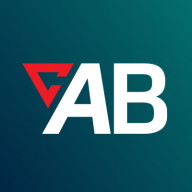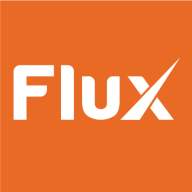

Flux and ActiveBatch by Redwood compete in the workflow automation platform category. Based on user feedback, Flux is viewed as a more cost-effective solution, whereas ActiveBatch provides advanced features and infrastructure, making it a preferable choice for larger enterprises despite the higher cost.
Features: Flux offers automation capabilities with seamless integrations and reliable real-time monitoring ideal for small to mid-sized businesses, cost-effective solutions, and ease of handling daily workflow. ActiveBatch by Redwood delivers extensive scheduling features, advanced workload automation, and comprehensive infrastructure support, accommodating the needs of larger enterprises demanding complex task automation with versatile support for various environments.
Ease of Deployment and Customer Service: Flux provides a simpler deployment process with efficient support, benefiting organizations seeking straightforward integration solutions. ActiveBatch by Redwood requires a more involved setup process but provides dedicated support which is valuable for companies needing tailored solutions, adapting deployment to larger environments enhances customization and scalability.
Pricing and ROI: Flux features a lower initial setup cost, ensuring faster ROI realization, making it attractive for smaller businesses with budget constraints. ActiveBatch by Redwood, despite its higher setup cost, promises a more robust ROI over time due to its extensive features and adaptability to complex enterprise needs, justifying the investment for businesses focusing on long-term scalability and efficiency.
| Product | Market Share (%) |
|---|---|
| ActiveBatch by Redwood | 2.2% |
| Flux | 0.6% |
| Other | 97.2% |

| Company Size | Count |
|---|---|
| Small Business | 10 |
| Midsize Enterprise | 13 |
| Large Enterprise | 46 |
ActiveBatch by Redwood enhances efficiency with features like job scheduling, integration, and real-time monitoring. It supports diverse platforms, automates tasks, and offers a single-pane view with robust security.
ActiveBatch streamlines automation by offering drag-and-drop functionality, pre-built job steps, and native integrations. Its customizable workflows and alert system aid in managing complex workloads like data processing and server monitoring across hybrid environments. While it effectively reduces manual errors and enhances productivity, areas like navigation and support for cloud platforms need enhancement. New users may face challenges due to its complexity and steep learning curve, and further improvements in reporting, mobile access, and training could provide additional support to users.
What important features does ActiveBatch offer?In finance, ActiveBatch is implemented for orchestrating batch processes and data management. The healthcare industry utilizes it for automating patient data updates and server monitoring, while the retail sector benefits from file transfers and inventory management automation.
Flux is a technology-driven tool designed to optimize workflow management, offering an agile approach and seamless integration to enhance project execution for businesses.
Designed for teams aiming to streamline processes, Flux provides robust features supporting efficient data flow and task management. Its architecture enables users to track projects, automate tasks, and improve communication among team members. The platform's comprehensive analytics offer insights, driving effective decision-making and boosting productivity.
What are the key features of Flux?Flux finds applications across industries such as finance, healthcare, and IT, where workflow automation is crucial. By tailoring automation and analytics, companies achieve marked improvements in operational efficiency, adapting processes for specific industry demands and ensuring compliance with sector standards.
We monitor all Managed File Transfer (MFT) reviews to prevent fraudulent reviews and keep review quality high. We do not post reviews by company employees or direct competitors. We validate each review for authenticity via cross-reference with LinkedIn, and personal follow-up with the reviewer when necessary.